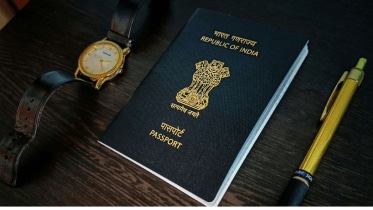Starting October 1, the Government of India has mandated that all foreign nationals and Overseas Citizen of India (OCI) cardholders submit a digital e-arrival card before entering the country. The new rule comes amid India’s ongoing efforts to digitise and modernise its immigration and border systems.
India introduces digital arrival card for all foreign and OCI visitors
India’s approach toward contactless and hassle-free immigration means passengers will no longer need to fill out the traditional paper disembarkation forms distributed on flights. Instead, travellers can now complete an online version of the form, also known as the e-arrival card, before they board their flight.
A person is said to be an Overseas Citizen of India (OCI) Cardholder if “he/she is registered by the Government of India, under Section 7A of The Citizenship (Amendment) Act, 2015,” according to Bureau of Immigration,
The initiative aims to simplify entry formalities, save time by cutting long queues, and speed up clearance at Indian airports, making the process more convenient for both travellers and authorities. Described as a “digital-first” move, the system is designed to make immigration faster, safer, and more transparent for travellers from around the world.
What is the E-arrival card and how it works
The e-arrival card is an online form that collects details about a traveller’s visit to India. It includes their passport information, flight number, address of stay, purpose of visit, and duration of stay, among other information
Travellers are advised to fill out this digital form up to 72 hours before their travel date through any of the following official platforms: https://indianvisaonline.gov.in, https://boi.gov.in or the Indian visa Su-Swagatam mobile app. The online platform is free to use, and since the form can be filled in advance, it prevents last-minute rushes at airports.
Once the E-travel form is submitted, travellers will receive an online confirmation that can be later shown at the immigration counter upon arrival. The entire process takes just a few minutes. The step conveniently eliminates the need for passengers to carry or fill out paper forms during their journey.
The BOI has also allowed travellers to include up to five family members on a single form. No additional documents or uploads are needed, just accurate details similar to the passport.
While the new system will be a compulsory task to follow from October 2025, the government has announced a six-month transition period. During this time, both digital and paper forms will be accepted at airports and seaports. Authorities are, however, encouraging travellers to start using the e-arrival option as soon as possible.
Not to be confused with the E-Visa system
It is important not to confuse the new e-arrival card with an e-visa, as this is a common mistake. Travellers still need a valid visa, either a traditional visa or an e-visa, to enter India. For example, an American visiting India on a business e-visa must also complete an e-arrival card before boarding their flight. However, this rule does not apply to Indian citizens or OCI cardholders travelling domestically within India.
Guide to filling the E-arrival card
- Visit the official Bureau of Immigration or the Indian Visa Online website.
- Enter personal details: Name, passport number, nationality, and date of birth.
- Add your flight number, arrival airport, address in India, and contact number.
- Select your purpose of visit
- Review your information carefully and submit the form.
